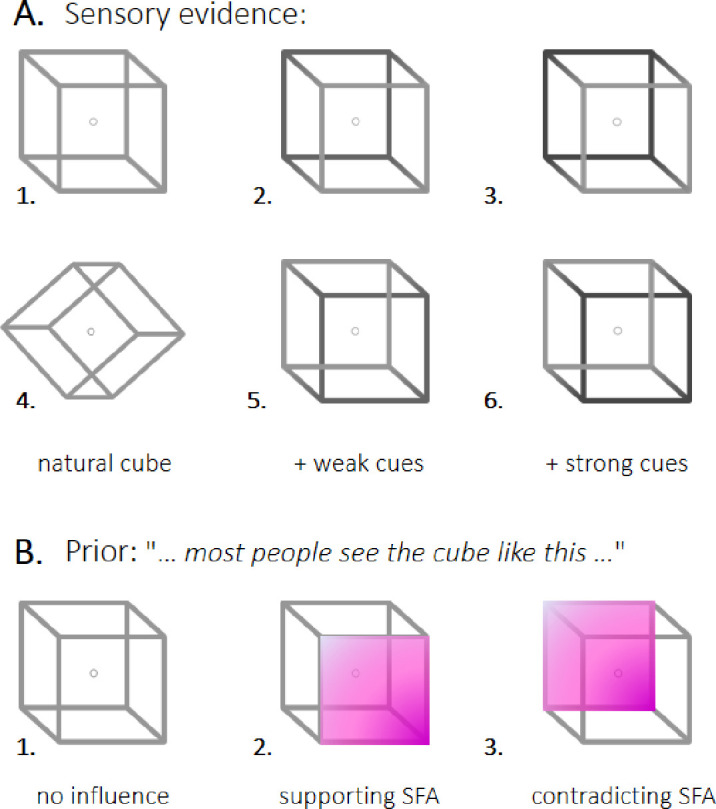Figure 1.

Stimuli and instructions. (A) Different Necker cubes were used to induce bistable perception, in which the 2D figure is perceived as a 3D cube with either the left or the right side located closer to the observer. Even in the case of the completely ambiguous stimulus (1), people have an implicit preference to interpret the cube as seen from above (SFA interpretation), which was interpreted as an implicit prior. This prior was refuted by tilting the stimulus (4). Sensory evidence was manipulated by adding visual cues in the form of contrasts (2-3 and 5-6). The contrast was strong (3 and 6) or weak (2 and 5) and supported (2 and 3) or contradicted (5 and 6) the implicit prior. (B) A further manipulation of the prior was achieved by providing correct or wrong information to the participants about which interpretation was generally stronger (explicit prior). The instructions either supported or contradicted the implicit prior. An additional control group received no particular instructions. Crucially, all groups received the same visual instructions (including the stimulus and the two possible interpretations) and the differences were only the verbal instructions to avoid additional priming effects. Note that the color used in the present figure has only been added for illustration purposes; during the experiment, participants were presented with full cubes.
